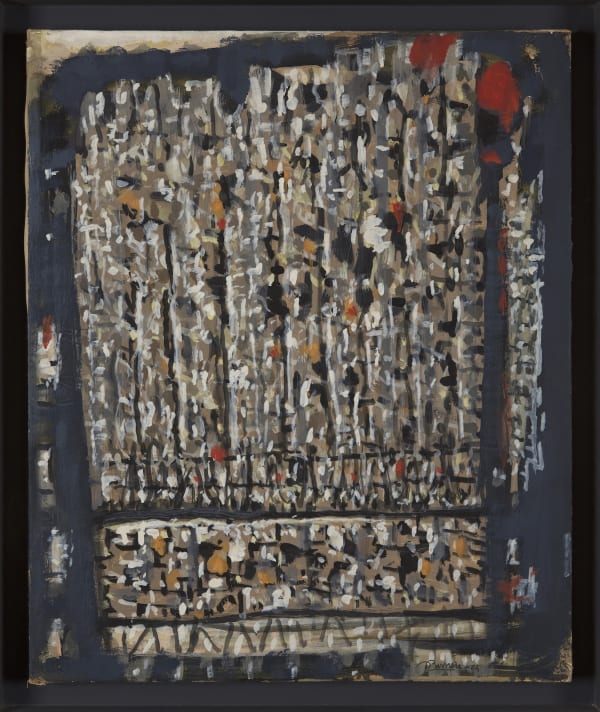Roger Bissière
Key figure of the second School of Paris, a pupil of Matisse, initially linked to Cubism, Roger Bissière turned after the war toward a sensitive form of abstraction, built up from small, rhythmic and tesselated touches. After the war, he deliberately sought a visual language that could reconcile fracture and harmony, fragility and resilience at the same time: a world broken into pieces, yet recomposed through painting. Almost like a woven fabric, his cancases reflect both his rural roots and the idea of painting as craft.
This 1964 canvas, painted the year of his death, reflects the maturity of his style. Layers
of gray, beige, and white, heightened by flashes of red and orange, are set within a dark structure reminiscent of a window or stained glass. The dense rhythm of the brushstrokes creates a luminous vibration, almost musical in effect. Here Bissière intimately balances darkness and light, rigor and breath, earth and elevation. With its sobriety and depth, the work testifies to a final spiritual quest, where abstraction becomes both respiration and inner equilibrium.
This painting was exhibited at the 1964 Venice Biennale, an edition for which he received an honorable mention for «the historical and artistic importance of his work.» This edition also saw the consecration of Robert Rauschenberg and with him Pop Art. Composition grise, 1964 therefore carries a piece of art history within it. It was also owned by the great collector Pierre Berès.


